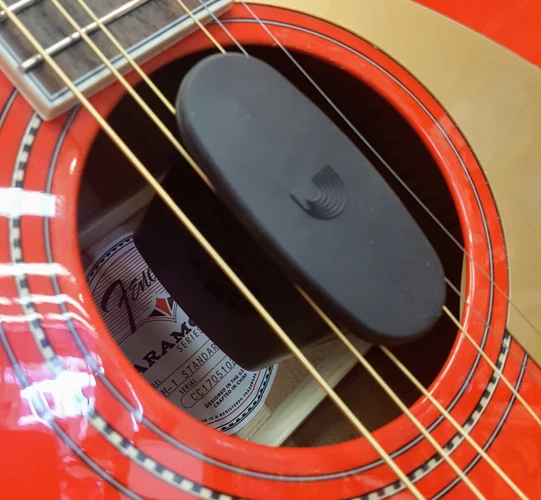Acoustic guitars are beloved for their rich tones and beautiful sound. However, these instruments are also sensitive to changes in humidity, which can lead to issues such as warping, cracking, or changes in tone quality. To maintain the optimal condition of an acoustic guitar, using a humidifier is essential. In this article, we will explore the importance of humidifiers for acoustic guitars and how they can help preserve the integrity and sound of your instrument.
The Impact of Humidity on Acoustic Guitars
Humidity plays a crucial role in the well-being of acoustic guitars. These instruments are typically made of wood, which is a hygroscopic material, meaning it can absorb and release moisture from the air. When the humidity levels are too low, the wood in the guitar can dry out and shrink, leading to cracks, buzzing strings, and changes in the neck curvature. On the other hand, high humidity levels can cause the wood to swell, leading to warping, high action, and a dull sound.
Why Use a Humidifier?
Maintaining the proper humidity level for your acoustic guitar is vital to prevent these issues. A humidifier helps regulate the moisture content in the guitar, keeping it within the ideal range of 45-55%. By using a humidifier, you can protect your instrument from the damaging effects of fluctuating humidity levels and ensure that it stays in optimal playing condition.
Types of Guitar Humidifiers
There are several types of humidifiers available for acoustic guitars, each with its own set of features and benefits. The most common types include soundhole humidifiers, case humidifiers, and room humidifiers.
Soundhole Humidifiers
Soundhole humidifiers are small devices that are placed inside the soundhole of the guitar. They usually consist of a container that holds water or a humidifying material, such as sponge or gel. Soundhole humidifiers are convenient to use and are effective at maintaining the humidity levels directly inside the guitar body.
Case Humidifiers
Case humidifiers are designed to be placed inside the guitar case. They work by releasing moisture slowly into the air, creating a humid environment for the guitar while it is stored. Case humidifiers are ideal for musicians who travel frequently or live in areas with extreme humidity levels.
Room Humidifiers
Room humidifiers are larger devices that are used to humidify the air in a room or studio where the guitar is kept. By maintaining the overall humidity level in the environment, room humidifiers can help ensure that the guitar is exposed to stable moisture conditions, reducing the risk of damage due to fluctuations.
How to Use a Guitar Humidifier
Using a guitar humidifier is simple, but it requires regular maintenance to ensure its effectiveness. Here are some tips on how to use a guitar humidifier properly:
Choose the Right Humidifier
Before purchasing a humidifier, make sure to choose the right type that suits your needs and the climate you live in. Consider factors such as the size of your guitar, the humidity levels in your area, and how often you play the instrument.
Follow the Instructions
Each humidifier comes with specific instructions on how to use it correctly. Make sure to read and follow the manufacturer’s guidelines to ensure that the humidifier is working efficiently.
Monitor the Humidity Levels
It’s essential to regularly monitor the humidity levels in your guitar case or room to ensure that they are within the recommended range. You can use a hygrometer to measure the humidity and adjust the humidifier as needed.
Refill and Clean the Humidifier
Depending on the type of humidifier you have, you may need to refill it with water or replace the humidifying material regularly. Additionally, cleaning the humidifier periodically will prevent the growth of mold or bacteria.
Benefits of Using a Humidifier for Acoustic Guitars
Prevention of Damage
One of the primary benefits of using a humidifier for acoustic guitars is the prevention of damage caused by fluctuations in humidity. By maintaining the proper moisture levels, you can protect your instrument from warping, cracking, and other issues that can affect its playability and sound quality.
Preservation of Tone
Humidity has a significant impact on the tone of an acoustic guitar. By keeping the wood at the right moisture level, you can preserve the instrument’s tonal characteristics and ensure that it continues to produce a warm, resonant sound.
Extended Instrument Lifespan
Regularly using a humidifier can extend the lifespan of your acoustic guitar. By keeping the wood well-hydrated and preventing dryness or swelling, you can ensure that your instrument remains in top condition for years to come.
Tips for Humidity Control
In addition to using a humidifier, there are other steps you can take to control the humidity levels around your acoustic guitar:
Store Your Guitar Properly
When not in use, store your acoustic guitar in a hard-shell case with a humidifier to maintain a stable environment. Avoid leaving the instrument in direct sunlight or near sources of heat or moisture.
Avoid Extreme Conditions
Try to keep your guitar away from extreme temperature and humidity changes, as these can cause rapid expansion or contraction of the wood, leading to damage.
Regular Maintenance
Perform regular maintenance on your guitar, such as cleaning and changing strings, to ensure that it remains in good playing condition. Check the humidity levels regularly and adjust the humidifier as needed.
Looking to care for your acoustic guitar? Check out our articles on hybrid picking exercises, budget pedals for country guitar, DIY cleaning tips, best humidifiers for guitar cases, and alternative string materials for country music to keep your instrument in top shape!
Conclusion
Humidifiers play a crucial role in maintaining the health and longevity of acoustic guitars. By regulating the humidity levels, these devices help prevent damage and preserve the tone and playability of the instrument. Whether you opt for a soundhole humidifier, case humidifier, or room humidifier, using a humidifier is a simple yet effective way to ensure that your acoustic guitar stays in optimal condition for years to come. Invest in a quality humidifier today and give your beloved instrument the care it deserves.



